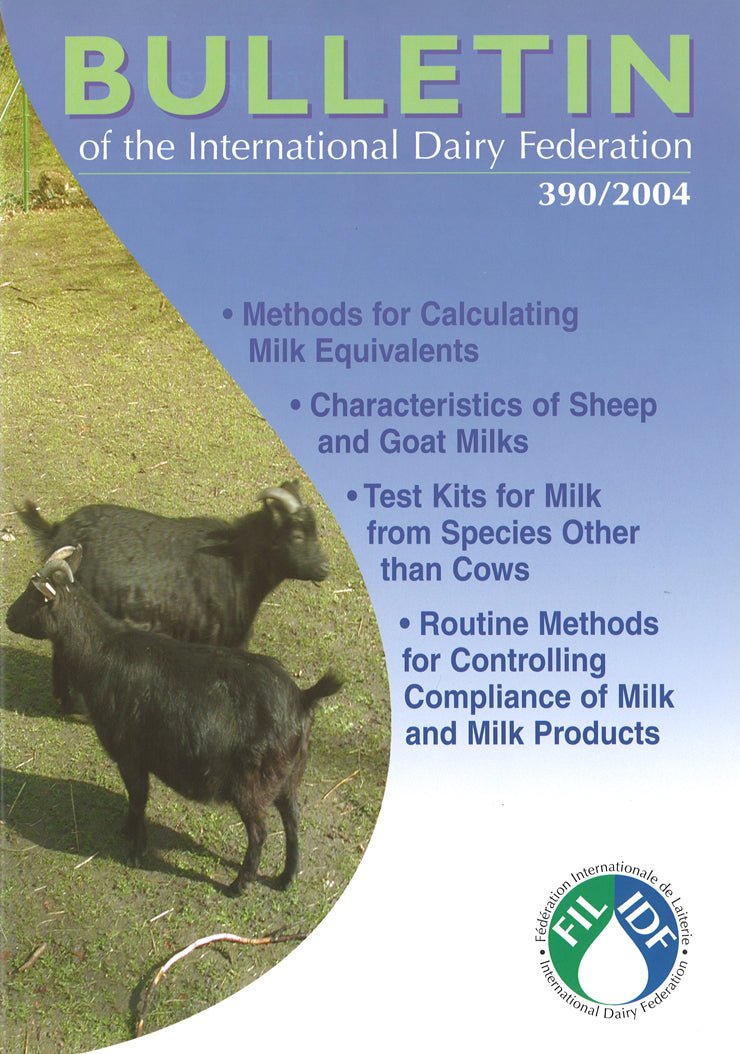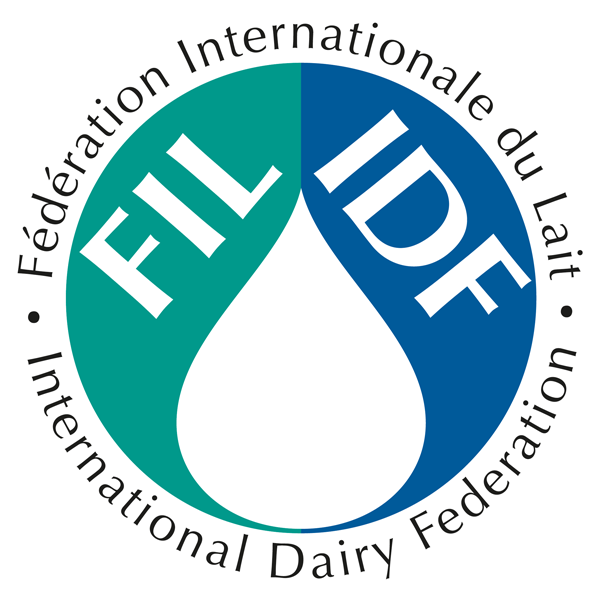Bulletin of the IDF N° 390/2004 - Methods for Calculating Milk Equivalents - Characteristics of Sheep and Goat Milks - Test Kits for Milk from Species Other than Cows- Scanned copy
Couldn't load pickup availability
Document info
| pages | 49 |
|---|---|
| published date | 24 March 2004 |
| reference | Bulletin of the IDF No. 390/2004 |
Publication description
Methods for Calculating Milk Equivalents
The methods for calculating "milk equivalents" have been on IDF’s agenda on a number of occasions. Finding a solution that satisfies all demands has remained elusive. This report gives examples of the application of the methods to illustrate the differences that can arise when the different methods are used and underline the need for care in interpretation.
15 pp
Characteristics of Sheep and Goat Milks: Quality and Hygienic Factors for the Sheep and Goat Dairy Sectors
This text aims to give the IDF Standing Committee on Microbiological Hygiene elements for application of hygienic regulations in the sheep and goat dairy sectors and to help the Codex Alimentarius to take into consideration the specified situation of the "sheep and goat" sector. This is an area where reliable figures have rarely been brought together before.
13 pp
Suitability and Application of Available Test Kits for the Detection of Residues of Antimicrobials in Milk from Species Other than the Cow – a Review
The production of milk, cheese and other dairy products from species other than the cow (that is, sheep, goat, buffalo, camel and less often the mare, reindeer and yak) has been very important in many countries around the world for millennia. This report deals with the application of test kit methods for antimicrobials, originally developed for use on cows’ milk, in the case of commercial milks of other species.
12 pp
Use of Routine Analytical Methods for Controlling Compliance of Milk and Milk Products with Compositional Requirements
Official reference methods are often slow, expensive and unsuitable for high-throughput analysis. More rapid and cheaper alternative methods may improve the process and product control because the sampling frequency can be increased with fewer resources. This report deals with the sometimes difficult question of the application of routine methods for enforcement purposes.
9 pp


